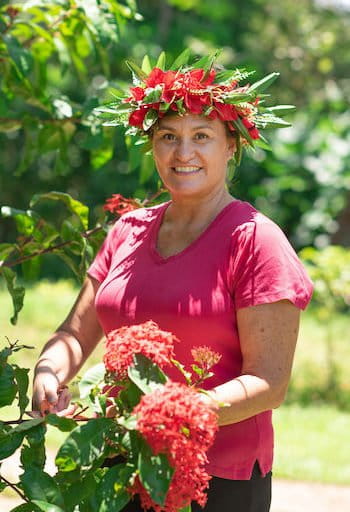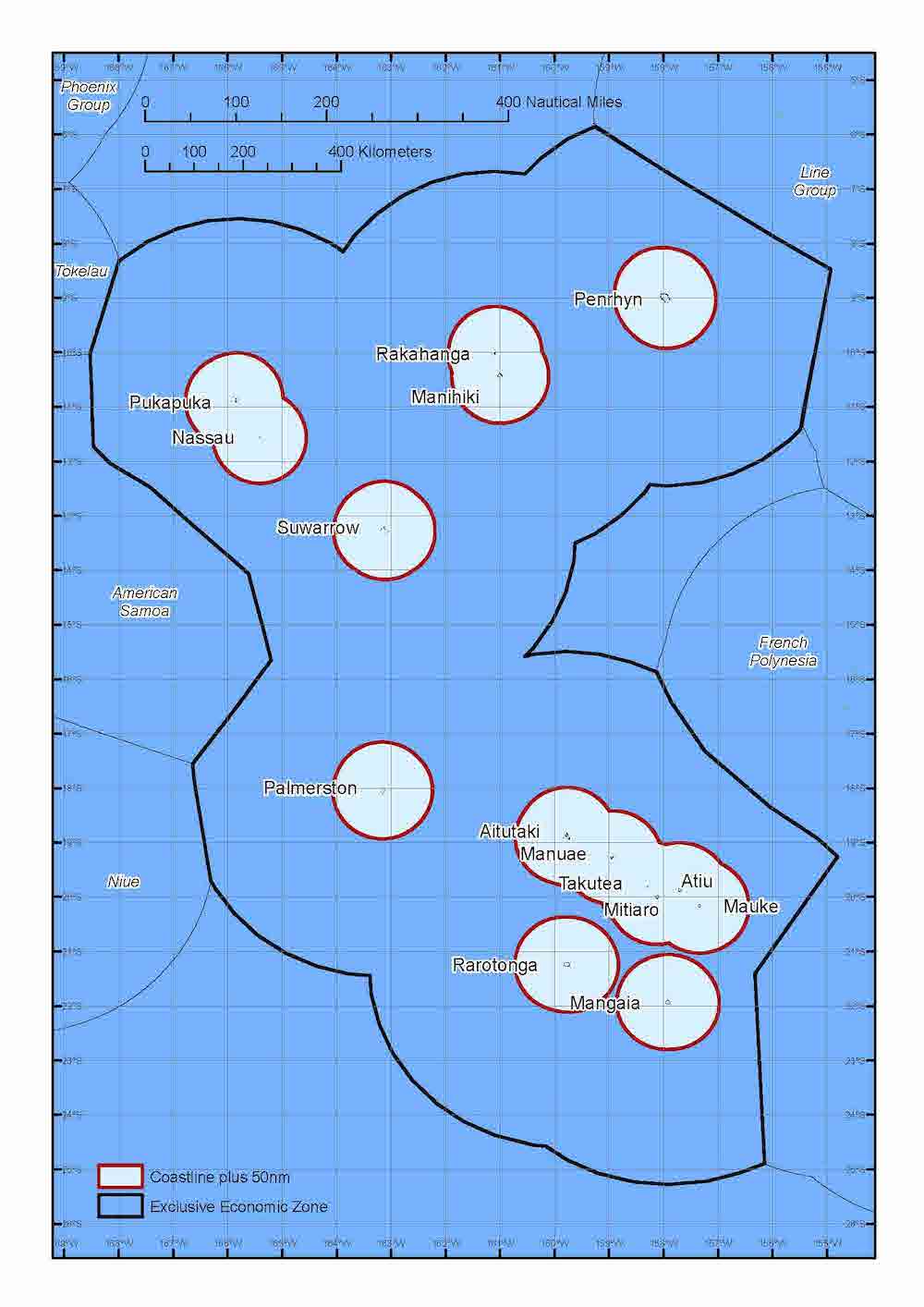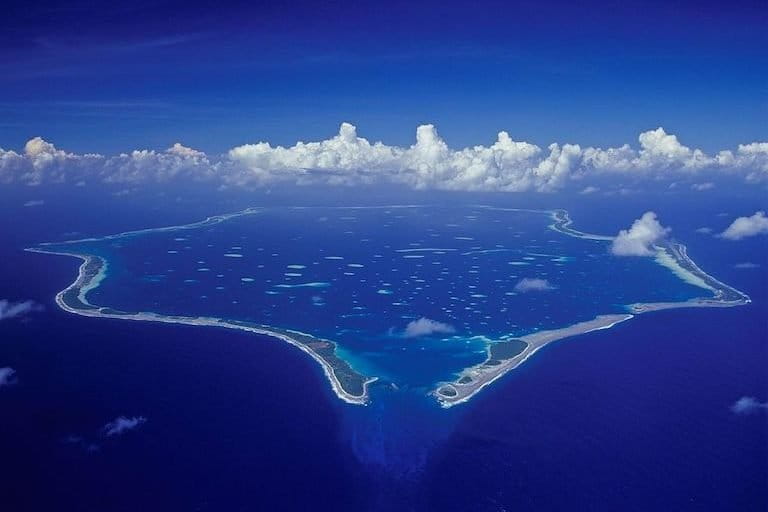- In July 2017, the South Pacific nation of the Cook Islands made a bold bid to convert its entire territorial waters, the exclusive economic zone (EEZ), into a mixed-use marine protected area.
- Called Marae Moana, or “sacred ocean,” the MPA spans almost 2 million square kilometers (772,200 square miles), making it the biggest in the world, although only parts of it are strictly protected from fishing and other extractive activities.
- Jacqueline Evans, a marine conservationist, was the driving force behind the MPA.
- This week, Evans was awarded a prestigious Goldman Environmental Prize for her work on Marae Moana.
This story is part of a series on Marae Moana, the massive, recently enacted multiple-use marine protected area covering the Cook Islands’ entire exclusive economic zone. Other stories in the series:
Will a massive marine protected area safeguard Cook Islands’ ocean?
Paradise, polluted: Cook Islands tries to clean up its tourism sector
Give it back to the gods: Reviving Māori tradition to protect marine life
Cook Islands MPA leader fired after supporting seabed mining freeze
The South Pacific archipelago of the Cook Islands might seem a diminutive site from which to launch and manage the largest multi-use marine protected area (MPA) on Earth. The country’s land area is only 240 square kilometers (92.7 square miles), and fewer than 15,000 people live there full-time.
But the ocean these islands sit within is immense, and their exclusive economic zone (EEZ) spans almost 2 million square kilometers (772,200 square miles) — an area similar in size to the landmass of Mexico. And in Polynesian cultural imaginaries, this ocean is not seen so much as a barrier or boundary, but a source of connection, expansion and sustenance.
Seen that way, the country’s bold bid to convert its entire EEZ into a mixed-use MPA in July 2017 — the world’s largest to date — is perhaps less of a surprise. Called Marae Moana, or “sacred ocean,” the initiative is angling for a paradigm shift in how Pacific peoples manage their ocean. Rather than setting aside pockets of protection in an expanse of industry, Marae Moana’s leaders are hoping to run things the other way around: with protection as the rule, rather than the exception.
This is significant in a place where foreign commercial fisheries make up an important part of the economy but are impacting local fish stocks, especially when they fish close to the islands’ shores. They’re also criticized for employing few residents and taking the lion’s share of profits overseas. Under Marae Moana, commercial fishing is still permitted in much of the EEZ, but is banned within a 50-nautical-mile (93-kilometer) radius around each island, and fishers will be subject to more stringent environmental regulations than previously.
The initial concept for Marae Moana was decidedly more modest. In 2012, Cook Islands Prime Minister Henry Puna announced a much less ambitious proposal: to create an MPA around the archipelago’s southern islands.
But many were concerned that the country’s main large-scale commercial fishing grounds in the north were left out. That’s when a team of marine conservation advocates stepped up and began a five-year campaign to broaden protection of the country’s ocean territory. With local celebrity and former rugby league star Kevin Iro fronting the campaign, much of the legwork was done by marine conservationist Jacqueline Evans.

Evans, 48, grew up in New Zealand and moved to the Cook Islands, where her mother was from, when she was 15. She’s spent most of her career in various corners of the close-knit Cook Islands conservation scene, beginning as a fisheries surveillance officer for the Ministry of Marine Resources and then working in various posts at the Cook Islands Conservation Service, the Cook Islands News, the World Wide Fund for Nature and the Ministry of Health. Before devoting herself full-time to Marae Moana in 2014 with the Marae Moana Establishment Trust, she was the director of the country’s first environmental NGO, the Te Ipukarea Society.
During the five-year campaign, Evans traveled widely across the archipelago with a team comprising traditional leaders and representatives of NGOs and governments to build public support for the Marae Moana concept. She sought to integrate community priorities and traditional marine management practices such as ra’ui, a system of taboos and protections over particular areas and/or species determined by community chiefs.
Despite opposition and skepticism, especially from government officials who were dependent on fishing licenses for revenue, the campaigners were ultimately successful. Marae Moana was brought into law on July 13, 2017. Since then, Evans, as director of the Marae Moana Coordination Office, has been working on planning and implementing the MPA.
On April 29, Evans was announced as one of six recipients of the Goldman Environmental Prize — a prestigious global award for grassroots environmentalists often called the “Green Nobel Prize” — for her work on preserving marine biodiversity and protecting Cook Islands traditions. We caught up with her just before the awards were announced to find out more about her work so far and her hopes for the future.

Mongabay: How does it feel to win the prize?
Jacqueline Evans: Oh, it’s actually surreal. It’s really strange having so much attention focused on me!
What do you feel particularly proud of, in terms of what the prize recognizes?
I’m particularly proud of the fact that the communities in the Cook Islands are super happy that they’ve got these protected areas established around their islands … These are 50-mile zones around each island where the long-line and purse seiner fishing boats cannot go fishing. That’s really good for the communities at home. [Editor’s note: Locals will still be able to fish there and will benefit from increased fish stocks.]
You’ve been involved in Marae Moana since its inception. Whose baby was it originally, yours or Kevin Iro’s?
[Laughs] It’s a shared baby, but it was actually his idea. [He was a] rugby league star overseas, and then he moved home with his family and got really concerned about the state of our marine environment. And he was also sitting on the Board of Tourism, so he saw this as a way to help protect our marine environment and draw some attention [to the country].
So then I got on board. He’s a visionary and he’s got celebrity status, but I’m from the environmental science perspective. And I could see how I could help him to make it happen.
What was challenging about getting the MPA scaled up to the size that it is today?
The scale-up from the initial proposal wasn’t too difficult. Because it was actually the community that asked for that, and the government listened. Even the government officials thought that it made sense, that if it was a multiple-use area, it should be the entire ocean territory.
I guess the main challenge we had in terms of closing areas for fishing was the lack of vision that some people had. They couldn’t see the benefits that go up against the negative side, which is loss of some revenue and smaller fishing grounds.

How did you get past that?
Some people, it was just a matter of getting them more involved and helping them to see the potential, and then they really came on board … There are only a few who still oppose it really, because there was so much support from community. And the government was listening to that and trying to have balance as well, between raising revenue from fishing vessels and answering the needs of the communities and traditional leaders in terms of conservation. In the end, they found that they struck that balance and agreed to close off 16percentof our ocean territory [from commercial fishing].
What role did international NGOs like Conservation International play in helping make Marae Moana happen?
They helped in terms of drawing some attention [to the initiative]. They were also really good in terms of talking to people in high places. So they introduced us to people that could help, made some videos for us, and gave us quite a lot of funding to get us started.
Fish don’t care about territorial boundaries. How does Marae Moana fit into the bigger picture of Pacific Ocean management?
Well, our Ministry of Marine Resources has been working on that for a long time, trying to establish conservation measures for tuna species in the Pacific region. Tuna has to be managed at the regional level.
I think, though, that this protected area actually complements what they’re doing, especially the fishing exclusion zones where you’ve got a lot of biodiversity congregating around the islands. You’ve got marine turtles going there to nest. You’ve got sea birds that go out foraging as well as whales that come in this area to have their calves. It’s a really important place to protect the marine environment.
Some people say, “Well, you’re just concentrating the efforts of the fishing vessels within our EEZ,” and it’s not true, because we also have boundaries that are shared with international waters. [Fishing vessels] can also follow the fish out to there.
We think that closing off areas around our islands is actually giving our fish a chance to spawn before they’re caught. [Some] fish are opportunistic spawners.
Where are you at now with implementing Marae Moana?
Now that the legislation has passed, it’s a really critical time. Especially having a multiple-use MPA, where there is still some economic activity allowed in most of the EEZ, it’s really important that we get the implementation right.
We’ve been working on our regulations in terms of the institutional arrangements that have been established under the Marae Moana Act: that’s the Marae Moana Council and the technical advisory group. We want to make sure those groups are operating in a transparent and democratic manner, so that NGOs and traditional leaders have equal say together with government agencies to manage the ocean resources. So we’ve been working on those … procedural regulations, as well as putting together some marine spatial planning procedures.
Next step is to begin collecting data on our deep ocean environment, and to create a marine spatial plan that will protect areas of the deep seabed and biodiversity, as well as other areas that might potentially in the future be exploited for mineral resources. There is a potential for that happening, but at the moment we’re working to collect data on biodiversity so that we can see what exists there and what species are important to protect. I mean, all of them are important to protect, but there are places where there is nothing living at 6 kilometers [3.7 miles] deep. So we want to go out and find out what is there.
Yes, because there is quite a lot of interest in seabed mining for manganese, isn’t there?
That’s right. Manganese nodules. It’s really strange, it’s a paradoxical thing: the minerals in the manganese nodules that people are wanting to mine, well the main mineral is cobalt— and cobalt is needed in batteries for electric cars. So on one hand, we’re trying to be more sustainable by converting to electric cars rather than burning fossil fuels, and on the other hand, some of the minerals and elements that we need for this new technology requires mining somewhere. That’s the irony, I guess.
And I imagine it’s pretty tempting as an economic option for the Cook Islands, too?
Yeah, yeah. We don’t have very many resources. Then again, tourism is an important industry for us and if it’s managed right, it could be something that sustains us in the future. People do say, “Well, what about if tourism goes down?” But we’ve only ever had tourism increasing. There has been the odd year that we have less [sic] tourists arrive and it does hurt businesses, but I think we’ve got to plan smarter for those situations where there might be a downturn in the global economy and we’ll get less visitors. I think tourism is potentially a sustainable source of income.

How is the monitoring and policing going? Obviously it’s a huge area to patrol.
This is something that the Pacific Island countries have been working on for some time with foreign fisheries agencies: monitoring and surveillance. The region has required that fishing vessels must have satellite transponders on their boats, so that we can monitor by satellite their activities. And you can tell from the data… what they’re doing: whether they’re fishing or whether they’re just sailing through your waters.
That’s the visual monitoring system, but we also have patrol boats and that works together with aerial surveillance. We have the New Zealand Air Force helping us as well as the Australian Air Force and the U.S. and French surveillance. They fly over our zones to look for fishing vessels and notify our patrol boats when they see something that shouldn’t be there or doing something they shouldn’t be doing.
Is it common that that happens?
I really don’t have that sort of data. It’s actually the Ministry of Marine Resources that has all of that … But it’s public information that we’ve caught some boats that are doing things they shouldn’t be, and they’ve had to pay millions of [New Zealand] dollars in fines. There have been court cases and settlements as well. It’s not very often that we hear about that. The Ministry of Marine Resources tells me that they don’t often have breaches, even within our exclusion zone within our ocean territory.
How does this large-scale plan affect community leaders’ rights to impose ra’ui over certain areas or species?
That forms part of the overall framework. We have Marae Moana covering all of our ocean territory, and then at the smaller scale … we have the ability for local government or local communities to establish marine spatial plans around their islands, and those plans can include areas that are ra’ui … It’s just a matter of supporting communities with enforcement of those ra’ui areas.
What’s next on your list? Where are you going to focus your energy on in the next couple of years?
We are hoping to get more information about our biodiversity of the deep ocean. We know so little about what is living here. That would be a big focus because it requires a lot of time to be able to do that. We need to have access to vessels and vehicles that can reach 6 kilometers in depth, so we’re hoping to form partnerships with people that can help us. That would be the main thing.
What motivates you to continue doing this kind of work?
I really have a lot of concern about what we’re going to leave our children. I’m a mum. I have a son. He’s 21 years of age. I do worry about what we’re leaving our kids. What kind of a planet we’re leaving for them. I think that that’s really what drives me. And also just a love of the ocean. I love our animals and I love to be in the water and I want to leave the planet just as clean— if not cleaner— than we found it.

Editor’s note: This interview has been edited for length and clarity.
Monica Evans is a freelance writer, researcher and community development practitioner. She lives in a small town on New Zealand’s wild West Coast. (She and Jacqueline Evans are not related.)
Clarification 5/3/19: At the request of Jacqueline Evans, a line in this interview has been adjusted to clarify that only some fish are opportunistic spawners.
Update 9/30/19: In late September, 2019, the Cook Islands’ government dismissed Jacqueline Evans as director of the Marae Moana coordination office, apparently because of her support for a 10-year moratorium on seabed mining, according to stories in the Cook Islands News.
FEEDBACK: Use this form to send a message to the editor of this post. If you want to post a public comment, you can do that at the bottom of the page.